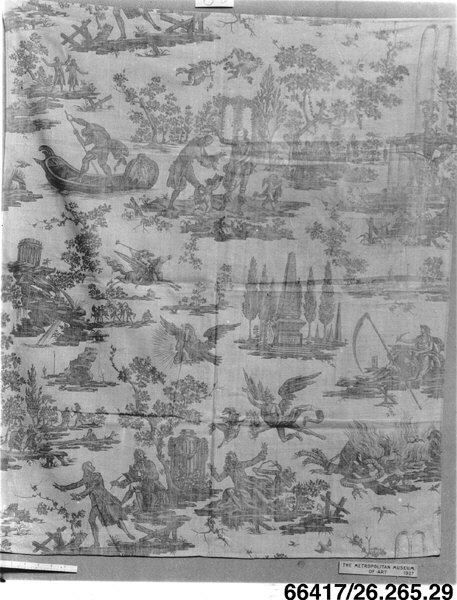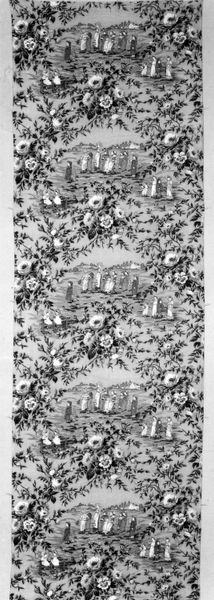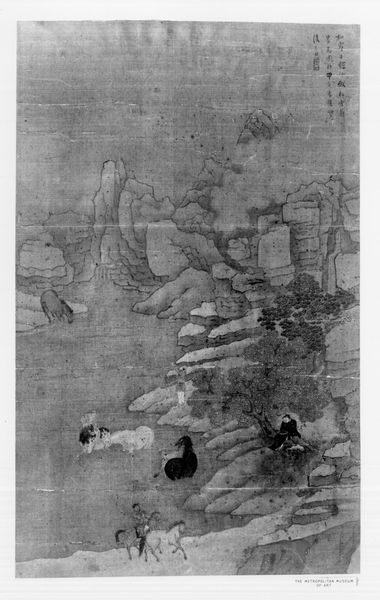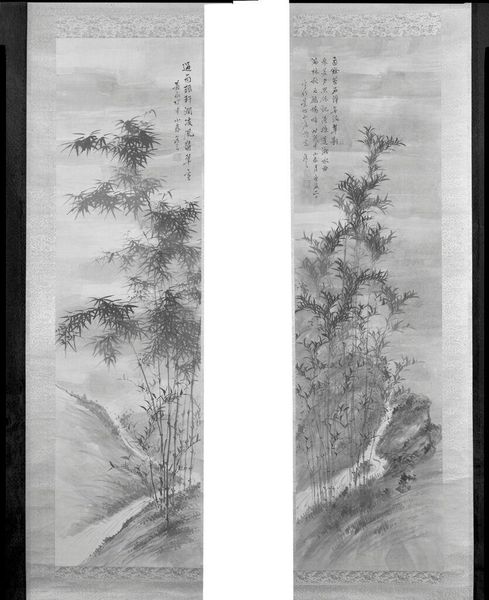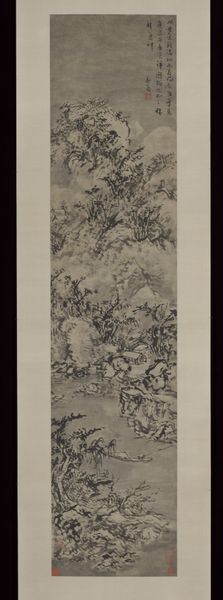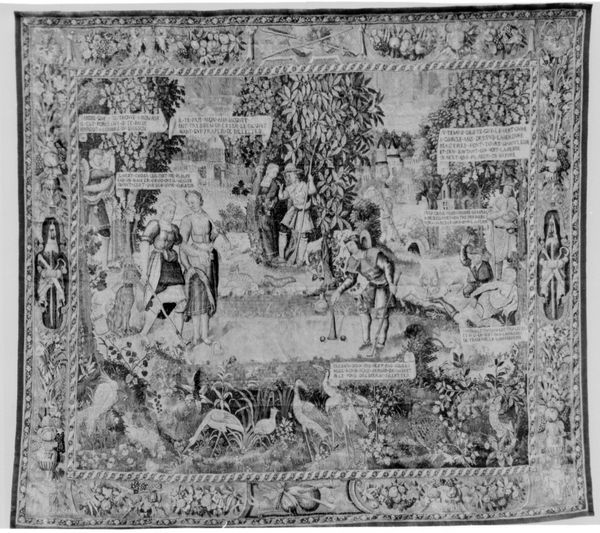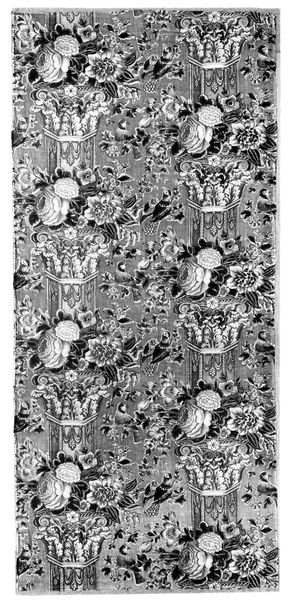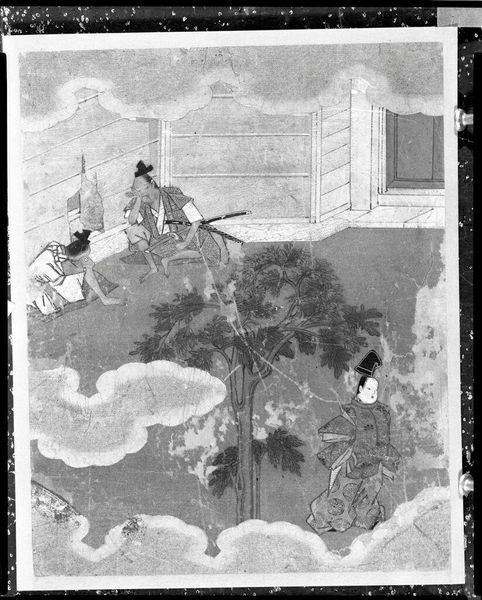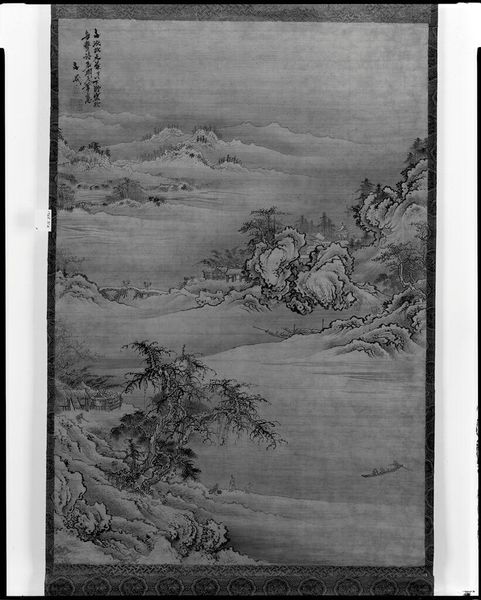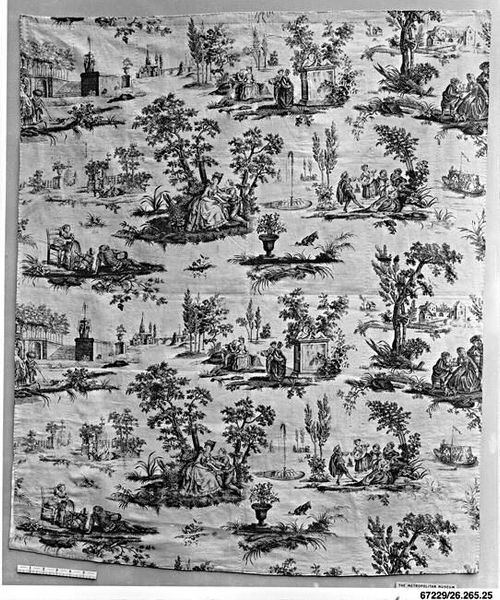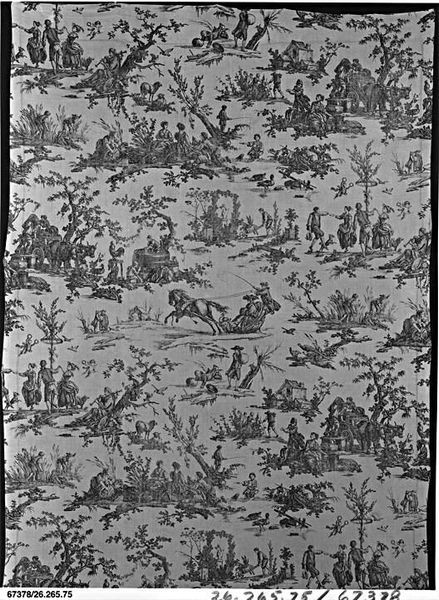
Dimensions: 199.4 × 70.4 cm (78 1/2 × 27 3/4 in.) Warp repeat: 88.2 cm (34 3/4 in.)
Copyright: Public Domain
Curator: This is a panel of furnishing fabric dating to around 1785, currently residing here at the Art Institute of Chicago. Editor: My first impression is that this fabric holds a whole world in monochrome. It's like peering into a formal garden where history is perpetually reenacted. Curator: Exactly! Note the recurring patterns. See how each tableau—a family, a hunt—repeats itself, layered almost as memories would be. Consider the impact of its original function. As a furnishing, the rhythmic arrangement provides visual cohesion across the surface of a room. Editor: It does create rhythm. And within each repeated scene, certain details stand out as symbolic cues. Dogs at their master’s feet denote fidelity; mounted hunters could reference martial prowess, control over the landscape... perhaps a family's self-image meticulously woven into the fabric of their lives. Curator: Indeed. We also observe how the linear perspective of the building in the background flattens the scene, bringing the eye back to the surface. The choice of engraving as the printing medium affects the legibility of the scenes as well as contributing to a strong linear framework to contain the designs. Editor: The landscape motif is so pervasive at that time! Consider the cultural narrative around nature—how it's often depicted as something to be dominated or aesthetically curated. Here, figures stride across carefully manicured terrain... even nature is designed to convey social messages! Curator: Precisely! By confining these pastoral narratives to a tightly controlled framework, it generates a paradoxical sense of idyllic containment. Observe the economy of form: The pattern exploits minimal shades to maximize representational effectiveness. Editor: Considering how fabric carries history within its threads—this work transcends mere decoration, inviting us into the collective psyche of late 18th-century society and their self-regard for both land and their role within it. Curator: Yes, that's a vital perspective to hold while appreciating its surface qualities and composition! Editor: Thank you! Viewing art objects like this expands our perception of art!
Comments
No comments
Be the first to comment and join the conversation on the ultimate creative platform.
